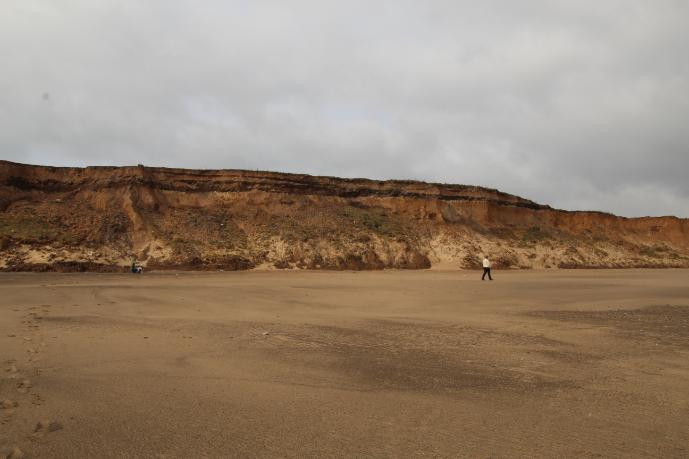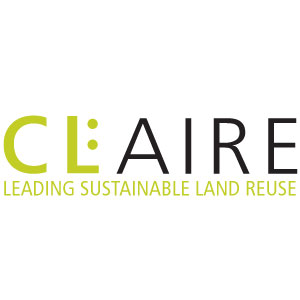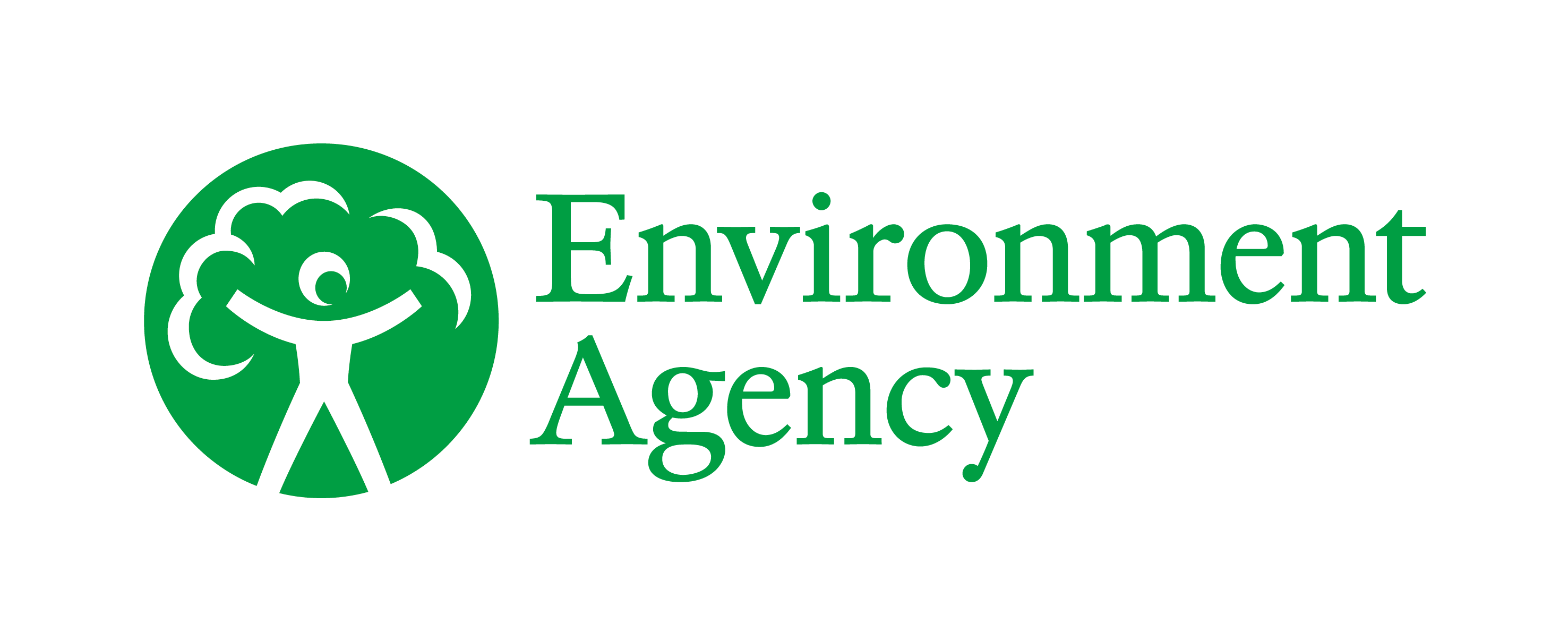News & Events
Site Visit to Withernsea Landfill, Holderness Coast
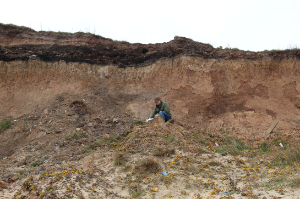
The rate of erosion along the Holderness Coast is one of the fastest in Europe, with average annual losses of 2 metres per year, and some sections retreating by as much as 10 metres per year. Following a tip-off by a local student, the University of Hull team visited a legacy municipal waste landfill site eroding into the sea, which had seen local media attention in November 2020.
It is thought that the landfill was operational for around 100 years until it’s closure in the mid-1960s, though records were not kept of its existence, as is the case for many landfills of that era. After a short walk along the beach from the town, a dark band of material in the till cliffs came into view; a cross-section of the landfill being exposed by crumbling cliffs, which can be seen below.
Closer inspection of the waste revealed its diverse contents, ranging from old pharmaceutical glass bottles, ceramic houseware, clothing, and evidence that some wastes had been incinerated before disposal (ash-like materials and the occasional melted bottle). It was also clear that the cliffs were actively eroding, with large amounts of waste still present in the cliffs above. Samples of the fallen waste were collected from across the length of the landfill, which will be analysed in the following weeks.
After walking over the top of the cliffs, it was clear that the majority of the waste is present in a heap towards the north of the site. Analysis of LiDAR topography data since the year 2000 showed that it is likely that a considerable amount of the waste has already been released to the coastal environment. With coastal erosion estimates suggesting complete release of this main waste deposit within the following century, it is crucially important that legacy landfills such these are properly identified and characterised to manage the environmental risks posed by coastal landfills across the UK.
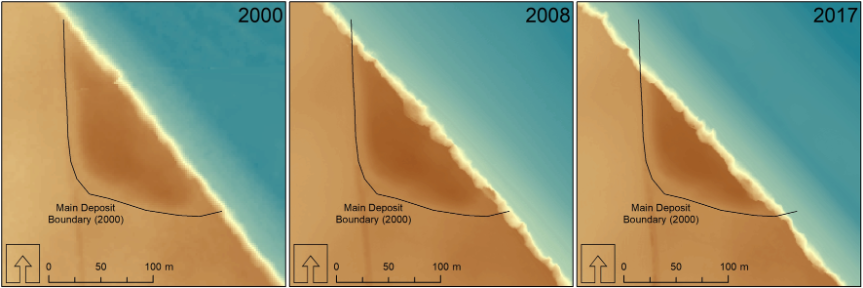
Last modified: Mon, 26 Apr 2021 10:01:11 BST

